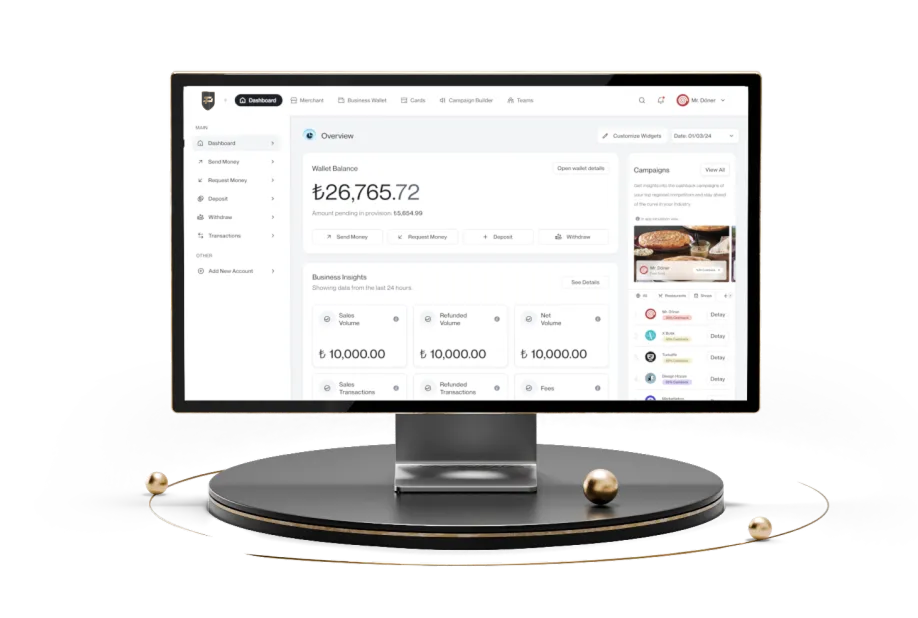What Is a SWOT Analysis? Strategic Planning Guide
The key to growing your business lies in having the right strategy. SWOT analysis is one of the most important tools you can use for this purpose. In this Papel Blog article, we answer questions such as what a SWOT analysis is, why it is conducted, and what its stages entail.
What is SWOT analysis?
SWOT analysis is one of the strategic analysis tools used to evaluate the current situation of an institution, project, or organization. The term SWOT is derived from the initials of the English words Strengths, Weaknesses, Opportunities, and Threats. It aims to systematically examine both internal factors (strengths and weaknesses) and external factors (opportunities and threats). Through this analysis, a business can reveal its advantages, identify its shortcomings, seize external opportunities, and take precautions against threats.
In strategic planning, SWOT analysis plays a critical role, especially in the “situation analysis” stage. Because it is impossible to decide where to go without understanding where the organization currently stands. SWOT provides decision-makers with different strategic approaches, such as combining strengths with opportunities, improving weaknesses, and developing defenses against threats. In this sense, it not only captures a snapshot of the current situation but also contributes to the creation of a strategic roadmap for the future. Additionally, SWOT data is utilized in risk management, resource allocation, and prioritization processes. However, it should be remembered that SWOT alone is not sufficient; when supported with accurate data, objective analysis, and regular updates, it becomes an effective strategic planning tool.

How to conduct a SWOT analysis? Step-by-step guide
The steps of SWOT analysis are as follows:
Defining the goal/scope
Before starting a SWOT analysis, you must clearly answer the question “What is the purpose of this analysis?”. For example, you may be launching a new product, reviewing your current business model, or planning market expansion. Your goal limits the factors you will focus on and helps you stay targeted.
Data collection
To conduct the analysis, objective and comprehensive data must be collected. You should gather data such as financial reports, customer surveys, market research, competitor analyses, and industry reports. These will help you build a stronger foundation for evaluating internal and external factors. If you want to organize this data digitally, you can monitor all your sales, transfers, and campaign performance on a single screen through the Papel Merchant Panel.
Identifying internal factors: Strengths and weaknesses
Strengths: These are the areas of advantage you can control and that distinguish you from competitors. For instance, your company might have a competitive edge in quality, strong branding, or customer service.
Weaknesses: These are deficiencies under your control that need improvement. It’s useful to gather feedback from team members when identifying them. For example, a company might face weaknesses such as insufficient capital, organizational inefficiency, or lack of infrastructure.
Identifying external factors: Opportunities and threats
Opportunities: These are external trends or developments that can work in your favor. Examples include technological innovations, market expansion possibilities, or changes in legislation.
Threats: These are external risks or negative factors that may affect you. Increasing competition, economic fluctuations, or regulatory restrictions can serve as examples.
Creating a SWOT matrix & placing the factors
Prepare a four-quadrant table where internal factors (strengths/weaknesses) are placed in the left column and external factors (opportunities/threats) in the right column. Then, fill each box with the items you’ve identified.
Correlating factors and forming strategic combinations
Think about the relationships between the factors in the SWOT matrix:
-
Strength + Opportunity → How can you create an advantage strategy?
-
Weakness + Opportunity → How can you overcome weaknesses and seize opportunities?
-
Strength + Threat → How can you use your advantages to prevent threats?
-
Weakness + Threat → How can you defend yourself and neutralize the threat?
Determining strategy and action plan
Based on the relationships identified, develop your strategies. For each strategy, determine concrete actions, responsible parties, timelines, necessary resources, and success criteria.
Monitoring, evaluation, and updating
As strategies are implemented, performance should be monitored and results evaluated. As external and internal conditions change, SWOT analysis should be updated periodically.

Where is SWOT analysis used?
SWOT analysis is not only used in business strategic planning but also in many different areas as a versatile method. Its most common use is to objectively evaluate an organization’s current situation and create a strategic roadmap when determining long-term goals. During the process of developing a new product or service, making market entry decisions, or targeting new customer segments, SWOT analysis clearly reveals strengths, weaknesses, opportunities, and threats.
This method is also frequently used in project management, helping to identify risks in advance and develop strategies to increase the likelihood of success. In addition, SWOT can be used to evaluate departmental performance, benchmark competitors, or plan for risks during crises. Beyond the business world, individuals can also perform personal SWOT analyses to highlight their strengths, identify areas for improvement, and better seize opportunities in their external environment. Moreover, public institutions, non-governmental organizations, and local governments can also use SWOT effectively in social projects, development plans, or sectoral analyses.
SWOT Analysis Example: Practical Company Evaluation
We will conduct an example SWOT analysis based on a hypothetical SME. The company profile is as follows:
– Medium-sized manufacturing and trading company
– Operates in a regional market
– Works with several local suppliers for raw materials
– Sells its products through both wholesale and retail channels
– Has recently started its digital transformation process
Strengths:
-
A well-known brand in the local market with strong customer loyalty
-
Flexible production capacity — scalable according to order size
-
Generally high product quality
-
Experienced and loyal workforce in production
-
Geographical proximity to raw materials / low logistics costs
-
Fast decision-making ability with low bureaucracy
Weaknesses:
-
Weak digital marketing and e-commerce infrastructure
-
Fragile capital structure — cash flow imbalances
-
Lack of institutionalization; insufficient process documentation and quality systems
-
Limited R&D investment; insufficient focus on innovation
-
Varying employee skill levels; limited access to qualified labor
-
Limited product range; dependency on a single product line is risky
Opportunities:
-
Growth of e-commerce and digital sales channels
-
Government incentive programs, grants, and SME support funds
-
Expansion potential into nearby cities/regions or export markets
-
Opportunity to build strategic partnerships and distributor networks
-
Rising consumer interest in environmentally sustainable products
-
Productivity gains through technology and automation investments
Threats:
-
Economic fluctuations, exchange rate volatility, and inflation
-
Sudden increases in raw material prices and supply disruptions
-
Intensifying competition, especially price pressure from larger firms
-
Frequent regulatory changes (taxes, environmental standards, etc.)
-
Risk of missing technological transformation — competitors adapting faster
-
Market contraction risks and seasonality effects
Based on this SWOT analysis, the following strategic recommendations can be considered for the SME:
S-O Strategies (Strength + Opportunity):
Leverage product quality and brand strength to enter the e-commerce channel quickly; attract new customer segments by offering sustainable, eco-friendly products.
W-O Strategies (Using opportunities to overcome weaknesses):
Invest in digital infrastructure to build online sales capacity; utilize R&D and innovation support to diversify products; improve workforce skills through training.
S-T Strategies (Using strengths to defend against threats):
Preserve local brand image instead of engaging in price wars; use logistics advantages to minimize costs and withstand competitive pressure; enhance production efficiency to maintain cost control.
W-T Strategies (Reducing weaknesses and protecting against threats):
Establish financial reserves and cost control systems; diversify suppliers to reduce raw material dependency; implement process standardization to minimize internal inefficiencies.
Sources: 1
This blog post contains general information, not legal, financial, or investment advice. The content is prepared for informational purposes only, and you are advised to seek professional advice for your specific circumstances. The expressions in this article do not carry any binding nature or responsibility and reflect only the author’s evaluation. All your decisions are your responsibility, and Papel Electronic Money and Payment Services Inc. accepts no liability for any consequences arising from them.

